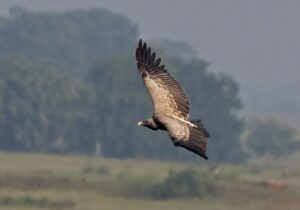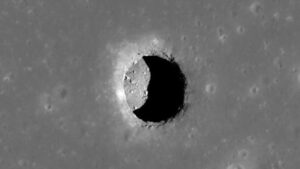A passion for the natural world drives many of our adventures. When we’re not outside, we love delving into discoveries about the places we live and travel. Here are some of the best natural history links we’ve found this week.
Dogs can smell human stress: When we are stressed, our body responds. The smell of our breath and sweat changes. Dogs can detect this change in odor.
We already knew that dogs know when humans are happy or scared, but this is the first time that scientists have shown that they also scent stress. The researchers tested four dogs with samples from 36 people. The dogs detected the ‘stress’ sample 93.8% of the time.
“This study provides further evidence of the extraordinary capabilities of man’s best friend,” psychologist Clara Wilson said.
Canines have 220 million olfactory receptors, 170 million more than humans.
Ancient party islands
Artificial islands were used for ancient parties: In medieval times, owning a crannog — a small artificial island within a lake or wetland — demonstrated that the owners were well-off.
Crannogs were created by building up shallow areas with peat or rocks. They were quite popular between 4,000 BC and the 16th century. There are hundreds of them around the UK.
Later, crannogs served as gathering places. Artifacts suggest that feasts took place here. People even brought over ferns as roofing or bedding material, suggesting that crannogs — up to 30m long — hosted sleepovers.

Loch Freuchie and a crannog. Photo: Shutterstock
Mammals in South America use trees as a pharmacy: Researchers have spotted black lion tamarins displaying unusual behavior in the forests of Brazil. The tamarins rub themselves against the trunks of the cabreúva tree.
They initially thought that the tamarins were marking their territory. But the movement is slightly different, and the group as a whole rubbed specific areas of the tree. It turned out that they were only rubbing those areas with resin on the trunk. The resin has a distinctive smell, and locals use it as both medicine and perfume.
Other species displayed similar behavior on these unusual trees. Ocelots, coati, brocket deer, and anteaters all rubbed themselves on the sap. It’s possible that the animals used the trees to self-medicate.
Large mammals return to Europe
Some species return to Europe: Over the years, many protected species in Europe have been reintroduced to the wild. Scientists are currently studying 50 species to understand how effective this rewilding is.
Eurasian beavers, grey wolves, grey seals, and the European bison show the strongest recoveries. The study looks at how these species have returned over the last half-century.
Grey wolves, in particular, are flourishing. Between 1965 and 2016, their numbers have risen by 1,800%. Local authorities have allowed culls in some Scandinavian farming areas because of their large numbers.
Underground lake on Mars: New data confirms that the Red Planet has underground salt lakes. One lies below the ice at Mars’ south pole.
Scientists have been trying to prove the existence of this particular lake since 2018 and have since found three more. Water on Mars tends to exist as ice, so liquid water would be a revelation. Teams scoured the data from the Mars Express spacecraft and produced computer models that provided evidence for their hypothesis.
The largest lake is 30km wide, and its water likely remains liquid thanks to geothermal heating and a lot of salt. Three smaller lakes surround the larger one. All are a few kilometres wide.
These lakes could be a potential habitat for life. On Earth, organisms survive in subglacial lakes. However, the concentration of salt might be an issue: It is 20 times higher than regular seawater.

Praying mantises might swarm Britain. Photo: Shutterstock
The UK to get a touch more tropical
Praying mantises set to swarm Britain: Experts predict that swarms of praying mantises will move to the UK from France. The insects are gradually moving further north because of climate change.
Record numbers have recently turned up on the Channel Island of Jersey, and the wind will push them toward mainland Britain over the coming days. The insects eat a combination of crickets and flies.
“It was always assumed that the climate in Britain was too cold and wet for the European mantis, but with the climate changing, conditions have become more suitable,” said ecologist Bjorn Beckmann.






